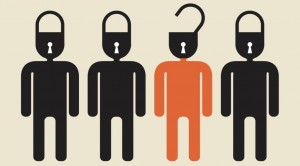In the last 5 years, almost all businesses, big or small, have realized just how vulnerable they are to cyber-attacks. The astonishingly increasing number of attacks each year trouble corporate heads so much that they spend hours on end discussing their company’s cyber security system. The IT professionals and Chief Information Security Officers (CISOs) are even more troubled, for they keep seeing their efforts foiled by hackers.
The number of big corporations targeted in 2015 only goes to show that no one is completely safe. Wherever you look, there is an Ashley Madison data breach case or a Home Depot or JP Morgan Chase case story from the past year that will make you realize just how precarious security structures are. To help corporations beef up their security better in 2016, we discuss some new ideas.
- Being aware of the data stored
It is quite astonishing how many big firms do not have any idea what huge chunks of data in their systems are about. Technologies like the Internet of Things have a lot to contribute to this, but company data should be handled better. One must at least know what is stored in their systems. That would provide them an idea as to what data is of the most priority and what needs to be protected most against threats.
- Focus on protecting data
The most infamous cases of 2015 related to data breaches of global services and corporations. Yet, corporations think that beefing up their firewalls and security perimeters is the answer to such attacks. They couldn’t be less accurate. Attacks like these go to show that protecting your data is the main priority. Encrypting different clusters of data with secure mechanisms is vital to prevent data from being compromised easily should unauthorized personnel make it into corporate network.
- Address the Mobile threat
Many corporations use the idea of Bring Your Own Device, allowing employees to use their personal device in the workplace. It is always safe to assume that most employees do not take the necessary security measures for their mobile devices. This invariably puts corporate data on such devices at great risk. IT admins need to have better control over such devices. They need not have more control, but better control.
- Spread awareness
It is never a bad time to spread awareness among employees, however small or high ranking they are, about the different threats they face. Ignorance should never be doubted or disregarded, for it is always present around you. Interacting with employees regularly about the different threats present and sharing ideas about improving security are good practises.
- Take insider threat seriously
You might shell out millions of dollars trying to protect your network from outside threats only to be undone by one of your employees clicking on a wrong link and compromising some sensitive data on his or her system. Hackers regularly send malicious emails to many employees in a firm in hopes that one of them falls for it, and they quite frequently do. Encourage your employees to be more vigilant, for such emails can quite easily be spotted.
Conclusion
We saw in this article how some new ideas can aid companies in improving their security against attacks from hackers. These are just some suggestions, which can definitely be improved upon post further study and research into the matter.



